Articles
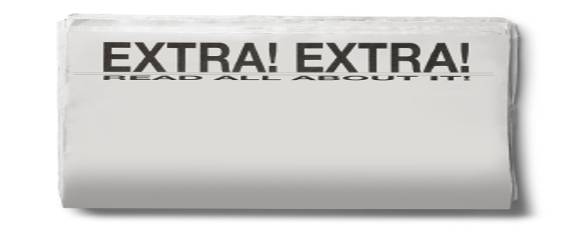
Five days,
3900 wines, black teeth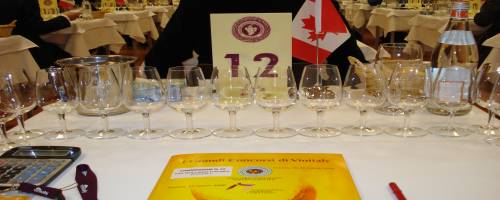
commission 12 - the
Canadian judge
Have you ever wondered
exactly how a wine competition is run?
What are the processes, who are the judges, what are the qualifications for a
winning wine? Is there a secret to winning or a style that stands out to a
judge’s palate?
Well, I’ve certainly wondered about all of those things. Small competitions
aside, based solely on local wines, how does a commission of tasters decide what
the best wines are when comparing wines from all over the world?
Those questions (and many
more) were answered for me during the last week of April when I was asked to be
a judge at the world’s largest wine festival – Vinitaly.
This annual festival is utterly mind-boggling in size. Held each spring in
Italy, around 150,000 people storm the beautiful north-eastern city of Verona
pouring into the Veronafiere and the 14 additional buildings that house wines
from the regions of Abruzzo to Umbria.
I Grandi Concorsi di Vinitaly
But before Vinitaly, before the wine arrived and the crowds flocked, a group
of 105 journalists and oenologists from around the world gathered to blind
taste, analyze and score 3700 wines submitted by producers from virtually every
wine-making region on the planet. It’s no small task to organize such an event.
Known in Italian as I Grandi Concorsi di Vinitaly, the Concorso Enologico
Internazionale (International Wine Competition) now in it’s 16th
year, was about to begin.
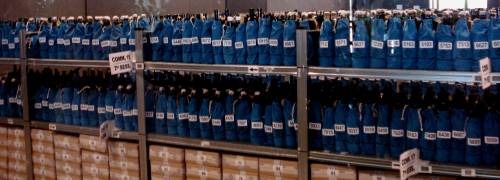
a
snapshot - just a few of the wines hrough the window into where the wines are
stored, waiting for judging and already separated into commissions
The Judges
The judges were a mixture of oenologists and journalists from all over the
world. The journalists represented newspapers, magazines, websites and sommelier
associations from Russia, China, Romania, India, Norway, Sweden, Korea, Vietnam,
USA, Canada, Australia, Estonia, Bulgaria, Mexico, Brazil, Netherlands, Japan,
Singapore, Malaysia, Slovakia, Spain, Taiwan, Portugal and Israel. The
oenologists traveled from France, Argentina, Chile, Germany, Spain, Switzerland,
Slovenia, Portugal, Brazil, Austria, Greece and the vast majority came from all
over Italy – two of those were women. 105 judges in total and surprisingly (and
much to the glee of the Italians) there were 20 women involved – primarily
journalists.
Something I noted and must point out is the importance of having such a large
group of judges from around the world. Primarily because our palates are
different – sometimes very, very different. In general - those of us from the
new world and those judges who are younger are used to the oaked Chardonnays
(balanced please) and lush, jammy wines. Whereas my fellow judges from certain
parts of the EU and from Italy are familiar with more reserved wines, balanced,
elegant and with higher acidity.
Having diverse palates, levels the playing field for the broad range of wines
that were represented in this competition. I sat between two young Italian
oenologists who were members of my commission throughout the 5 days and we often
compared our scores (with hand gestures and choppy Italiano-Engish) of the wines
after each judging session. Mostly our scores were within three points of each
other but every so often we would argue over a range of 10 points in a wine.
Either way, at the end of each session each wine had received five scores from
our commission and as always the highest or the lowest scores were disregarded
in case of extreme palate differences.
The Rules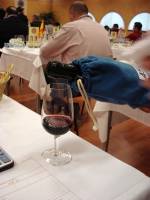
For the wineries and the producers, the rules are simple; as many wines can be
entered as desired - in any category. Six samples must of each wine must arrive - in case of
corked bottles, and, in case the wine does extremely well and makes it to the
final round of the competition. The top scorers in each category go on to the
second round of tastings and can possibly win a gold, silver or bronze medal as
long as their average score is higher than 80 points out of 100. And even if a
producer does not win a medal they can wine a Special Prize “Vinitaly 2008” if
they obtain the highest scores of any wine from their country – as long as at
least 10 different producers from that country have submitted.
my sommelier pouring a wine during a judging session
For the
judges, the task was much more intense. First we were broken into 21
commissions’ (groups) of five. Each commission was comprised of oenologists and
journalists seated in a row, front to back so we could not see any facial
expressions on our fellow commission members. Every judge was stationed at their
own table with name tag, country of origin flag, spit-bucket, bottled water,
bread, empty ISO glassware (or Champagne flute depending on the wines), a
calculator, red marker, a folder with rules and a list of each session’s wines.
Now, to be clear the wines were not listed by name but had been methodically and
carefully wrapped and numbered so no one could see the bottles. Each day we had
four sessions of blind tastings - two in the morning and two in the afternoon.
Each session had 12-13 wines and we were given about 4 minutes to judge each
wine. The wines were divided into like groups. These groups were divided into
still and sparkling wines….
Still Wines
These two categories were again divided into two broad classes being; a) wines
of origin (EU v.q.p.r.d) b) other wines with geographical designation. From
there the wines are again divided into eight groups: 1) white wines 2) white
wines matured in oak barriques or fined in oak 3) red wines produced in the last
three vintages – 2005, 2006, 2007 4) red wines four-six years after harvesting –
2002, 2003, 2004 5) red wines harvested over six years ago – 2001 and prior 6)
rosé wines 7) naturally sweet wines 8) liqueur wines.
Sparkling Wines
Likewise, sparkling wines were broken down into two broad classes: a) sparkling
wines of origin (EU v.q.p.r.d) b) other wines with geographic designation. From
there the sparklers were divided into three more categories: sparkling wines
made in the charmat process (fermented in a glass-lined tank) b) sparkling wines
made in the traditional method (bottle fermentation) c) sweet sparkling wines.
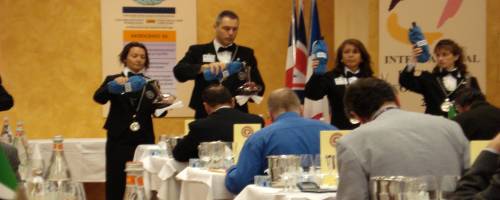
sommeliers decanting
older wines
The
Process
Each commission was served a different wine with a different number
corresponding to a list in front of us. Each of the five commission members had
the same wine poured by their own sommelier. Each commission had its own
sommelier. The pouring of each wine, into each glass was an orchestrated ballet
and was poured in synchronicity row by row. As we judges visually inspected,
sniffed and then tasted each wine we had carte blanche to put up our hand to
demand a second bottle if we felt it was corked or faulted. Since we were unable
to talk during the tastings we did not have to confer with the other commission
members. But, there was never a time when either I or my fellow oenologists did
not put up our hands in unison when we found fault in a wine.
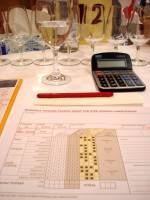
During the blind tasting the wines were judged by colour, intensity and clarity.
They were than scored on genuine aromas, intensity, refinement and harmony and
on the palate by genuine flavours, intensity, body, harmony, persistence and
after taste as well as a final overall score. Basically, how I score and review
wines on winescores.ca.
score sheet commission 12
The Results
There were more samples submitted this year than ever before yet less awards and
medals were given in an attempt to ensure the quality of the Vinitaly
competition. 100 medals were awarded and the 2008 “Grand Vinitaly” award went to
German producer:
Divino
Nordheim – Die Winzergenossenschaft - Nordheim, Bayern. The “Grand Vinitaly”
award is considered to be the most prestigious of the competition and is awarded
to the winery that achieved highest scores for two of their submitted wines that
won medals.
Countries taking part in the XVI
International Wine Competition:
Albania, Argentina, Australia, Austria, Brazil, Bulgaria, Canada, Chile, Cyprus,
Croatia, France, Georgia, Germany, Greece, Israel, Italy, Lebanon, Malta,
Mexico, Moldavia, Portugal, Czech Republic, Republic of San Marino, Rumania,
Slovakia, Slovenia, Spain, United States of America, South Africa, Switzerland,
Turkey, Hungary.
Those winners will be posted on the website
www.vinitaly.com
The Conclusion
At the end of five days of intensive judging we had tasted 3,905 wines as a
whole. Italian wines were the obvious winners but gold medals were also won by
France, Germany, Spain, Croatia, Canada, Chile and Australia. The number of
corked or faulted bottles was 191 (about 3.9 % of the wines) and the sommeliers
who diligently poured the competition wines each walked over 58km carrying and
pouring wines throughout the competition days. Over 24,000 glasses and 800
decanters (to decant the older vintages) were used.…
And my teeth were in desperate need of some serious bleaching.
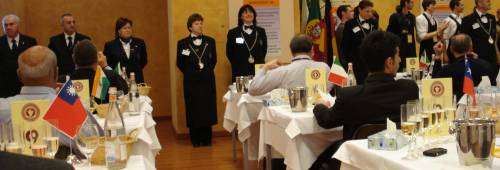
When this Royalty Comes to
Town they Bring Wine!
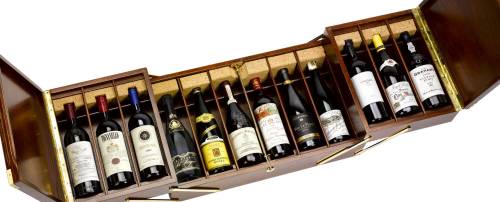
posted March 18 2008
by Daenna Van Mulligen
Each year an elite group of “wine royalty” converges on a different city in the
world. This elite group consists of the planet's premium wine families.
The Primum Familiae Vini (the first families of wine) produce internationally
recognized wines known to represent tradition and history in the world of wine.
It’s a wine weenie’s dream team.
The mandate of the PFV is to support family wine business, share business
knowledge and viticultural/oenological information and promote respect for
terroir.
The dream for this team was conceived in 1991 when Miguel Torres and Robert
Drouhin held an informal meeting (over wine, one would assume) and, as it came
to fruition Robert Mondavi (no longer a member), James Symington and Piero
Antinori were the first to join in.
Now, more than 16 years later the PFV now holds a membership of 11 of some of the most
elite European families whose wines are iconic, they are of premium quality and whose
power and passion is unquestionable.
Each of these individual families (through invitation only) has been asked to
join - they consist of: Antinori, Joseph Drouhin, Hugel & Fils, Perrin & Fils,
Tenuta San Guido, Chateau Mouton Rothschild, Egon Muller Scharzhof, Pol Roger,
Symington Family Estates, Torres and Vega~Sicilia.
On March 10, 2008
eleven family members of the PFV chose Vancouver for an intimate tasting and
lunch with wine media at the famed Il Giardino Restaurant followed by a more
extensive tasting at the Four Seasons. The next evening - also at the Four
Seasons - a Gala Dinner and Charity Auction for 240 people was held. Tickets for
that event were $350 each and proceeds went to the BC Mental Health Foundation.
A stunning case of wine containing a premium wine from each of the houses was
auctioned off. (see photo above)
It was the first time the PFV has come to Vancouver, having spread their love
and wine around the world to cities such as: Valencia, Singapore, Mumbai,
Moscow, New York, London, Bangkok…
Along with
them, each family brings library wines to showcase the quality and typicity of
their premium wines and to discuss their individual philosophy and terroir. They
see each other several times per year and have become somewhat of a family
themselves – something that is evident in their cajoling and sibling-like
banter. And, after being seated smack in the middle of the French trio of Julien
de Rothschild, Thomas Perrin and Etienne Hugel it made me seriously wonder who
enjoys these events more – we wine geeks or the PFV families themselves…
Here are the 22 wines we
tasted:
Champagne
Pol Roger
- visiting member: (and this years PFV president) Hubert de Billy, Epernay
France.
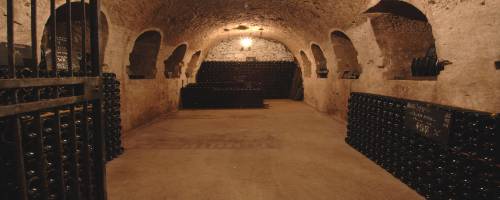
caves of Pol Roger
Cuvée Sir Winston Churchill 1998 – The 1998 tete de cuvée (top blend) has white
floral, fresh apple and pear aromas, warm toasty notes, citrus and minerals with
perfect tiny bubbles. It has a creamy, rounded texture with citrus and leesy
flavours, mouth-watering acidity with lingering zest and minerality. Fresh.
Cuvée Sir Winston Churchill 1988 – Softer aromas appear on the 1988 than
on the 1998 cuvée - pear and buttery notes with toasty undertones and continuous
bubbles. On the palate its wonderfully creamy – the smoothness lingers with
hints of ginger and citrus tones on the finish.
Joseph Drouhin
– visiting member: Laurent Drouhin, Beaune France.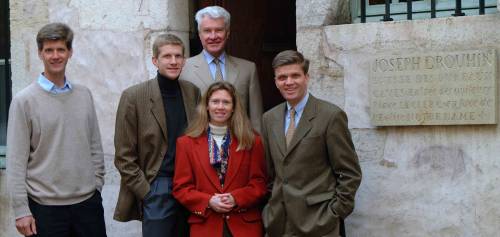
The
Drouhin family with Laurent second from left, father Robert-top, and sister
Véronique winemaker at Domaine Drouhin in Oregon
Montrachet Grand Cru Marquis de Laguiche 2004- Golden-yellow in hue the
2004 had obvious buttery aromas, with ripe pear and hints of golden pineapple,
toasted brioche and nuts. Silky on the palate with creamy caramel, lemony and
orange tones, minerals followed with a lengthy finish - elegant.
Montrachet Grand Cru Marquis de Laguiche 1992 – The 1997 had more rich
golden-hues from age and the aromas were more reserved – less fruit forward more
earthy and oxidized. Aromas are of roasted pears, honey and peaches with sweet,
layered honeyed flavours on the palate. Weighty and mysteriously seductive on
the tongue with lingering soft spices - gorgeous.
Antinori
– visiting
member: Alessia Antinori, Firenze Italy.
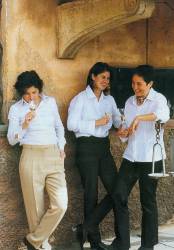
Solaia 2004 – A bright-warm ruby colour wit profound aromas; plums,
maraschino cherries, earth, truffles, chocolate and dark floral notes. Full and
beautiful in the mouth, smooth and earthy nicely integrated with fresh fruit
then lingering cocoa and coffee flavours on the finish.
Solaia 1999 – Shows a richer colour than the 2004 with just a hint of age
and aromas of dark cherry and plum with undertones of berries and minerals.
Classic Italian power and elegance on the palate, smooth and layered flavours,
pleasing acidity and a lingering finish.
The ladies of Antinori - Alessia is in the middle
Tenuta San Guido
– visiting member: Sebastiano Rosa, Bolgheri Italy.
The original Super Tuscan
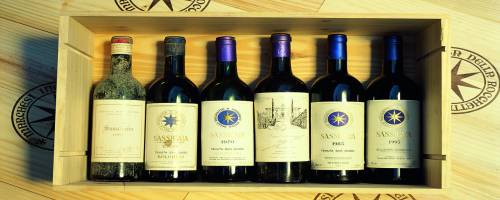
Sassicaia 2004 – A fantastic vintage, the 2004 shows cherry, banana,
sweet dark floral, berries, earth and cedar. Lush and supple in the mouth with
layered flavours of plums, silky cocoa and roasted coffee, fresh acidity and a
smooth finish. Finesse.
Sassicaia 1999 – Aromas are cherries, preserved fruit, iodine and crushed,
dried flowers. The minerality of Bolgheri shows through on the palate – dense
and earthy – an elegant terroir-driven palate.
(Sassicaia is primarily Cabernet Sauvignon)

Torres
– visiting
member: Miguel Torres Jr., Barcelona Spain.
Mas La Plana 2003
– Sweet red fruit with a dense liqueur essence, rich dark earth, minerals,
balsamic and cedar notes. Rich and elegant on the palate with ripe berry
flavours and smooth tannins.
Mas La Plana 1997 – Minty herbs and pine aromas on the nose with fresh
berry notes. The palate is sharper on the 1997 than the 2003 with a bright entry
– loads of acidity and menthol flavours wrapped tightly around the fruit. Fine,
soft tannins on the finish.
(Mas La Plana is
Cabernet Sauvignon)
Vega~Sicilia
– visiting member: Pablo
Alvarez, Valbuena de Duero Spain.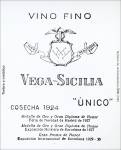
Unico 1996
– This premium Vega~Sicilia label is produced only in the best vintages. The
1996 has aromas of cherries, red berries, earthy cocoa and minerals with
flavours that echo the aromas. Loads of bright acidity and terroir focused
minerality with soft tannins on the finish.
Unico 1989 - Sweet berry aromas, pencil shavings, cedar and it absolutely
speaks the same mineral-terroir language as the 1996. Fresh and elegant on the
palate with vivid acidity and soft tannins this is an intellectual wine from one
of the worlds most sought producers and Pablo is probably the quietest and
shyest member of the PFV group.
(Unico is primarily
Tempranillo and Cabernet Sauvignon sometimes with Malbec and Merlot)
Perrin &
Fils –
visiting member: Thomas Perrin, Orange France.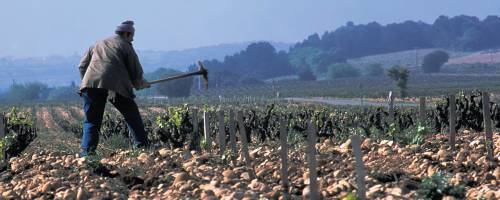
Perrin Vineyard - just
look at those heat retaining stones
Château de Beaucastel Red Châteauneuf du Pape 2005 – One of my favourite
wines, the Château de Beaucastel reds utilize all 13 allowable grape varieties
(red and white) in the region of Châteauneuf du Pape. The 2005 has a bright
ruby-berry hue with sweet berry aromas, warm spices and praline-nutty notes. It
is smooth and fresh on the palate with ripe fruit, clove and pepper spice
flavours showing coffee hints and fine tannins on the finish.
Château de Beaucastel Red Châteauneuf du Pape 1990 – The colour here is
deeper, starting to brick with earthy dark fruit and floral aromas, rustic hints
- wet leather and berry undertones. The fruit on the palate still sweet and
quite youthful, it’s smooth with pleasing acidity, it is medium-bodied and shows
leather-y flavours on the finish.

Château Mouton Rothschild
– visiting member: Julien de
Rothschild, Pauillac France.
Château Mouton Rothschild, 1998 – Ruby-garnet in colour with youthful
aromas of cherry, menthol, bananas and herbs and undertones of pencil shavings
and cedar-box spices. The palate is gentle and finessed with soft coffee, earth
and more cedar box with a finish that is smooth, elegant and dry.
Château Mouton Rothschild, 1986 – Dried fruits – berry, cherry – smoke,
wet leather and pencil shavings on the nose with a silky, dry palate of cocoa
and earth with a lingering finish. Elegance personified, another iconic wine.
Philippe, Baroness Philippine and Julien de Rothschild
Egon
Müller Scharzhof –
visiting member Egon Müller – Wiltingen/Saar Germany.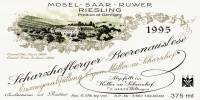
Scharzhofberger Auslese Goldkapsel 2005 – "The greatest vintage ever"
Egon said.
The 2005 is a light golden-hued dessert wine with an all around intensity that
will amaze you. Ripe peaches, apricot and ginger-lemon tea. The flavours echo
the nose with an intense flavour profile highlighted by the sweet gingery
flavours and balanced with the mouth-watering acidity.
Scharzhofberger Auslese Goldkapsel 1990 – Richer golden in colour
than the 2005 with deeper aromas of minerals, lemon rind, crabapples, apricots
and sweet spice. On the palate it’s lush, it prickles your tongue with spice,
and soothes it with ginger syrup and candied citrus rind -simply stunning.
Hugel &
Fils-
visiting member:
Etienne Hugel, Riquewihr France.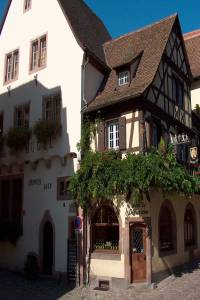
Gewurztraminer Sélection
de Grains Nobles 2002 – The most select of the Hugel wines the Sélection de
Grains Nobles is golden-hued with exotic spice and tropical aromas - lychee,
mango, rose oil and honeysuckle with notes of musk. Liqueur-like intensity
featuring apricots, honey and ginger and the earthy/musky effect of boytritis
balanced with clean acidity.
Gewurztraminer Sélection de Grains Nobles 1976 – Lemon-lime, herbs and
tea leaves, eucalyptus and mint, honey and did I mention mint? Slightly oxidized
on the palate with lemonade flavours - age has diminished the sweetness (but
not the finesse) leaving a smooth, mysterious and wonderfully seductive wine.
The tasting room and salon de degustation at Hugel & Fils
Symington Family Estates
– visiting member: Rupert Symington, Vila Nova de Gaia, Portugal.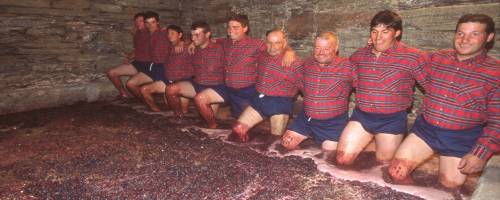
tradition at Symington
Quinto do Vesuvio Vintage
Port 2005 – A gorgeous ruby hue with purple glints, the 2005 has aromas of
blueberry liqueur, boysenberries and cedar. Sweet dark and intense on the palate
supported with flavours of dark berries, caramel, toffee and sweet spices. Young
and jubilant.
Quinto do Vesuvio Vintage Port 1980– Garnet-hued moving into brown the
1980 has melded into sweet dried fruit, cedar-box and caramel. Elegant and
raisined on the palate showing dried fruits, toffee and lingering warmly with a
gently spiced finish.
This is why we love aged Port.
Red Heads Have More Fun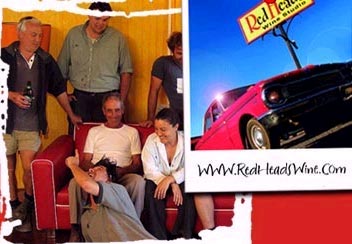
posted March 2 2008
by Daenna Van Mulligen
Merriam-Webster’s Dictionary – ‘young turk’ radical; one
advocating changes within a usually established group….
A strong title? Perhaps, but Justin Lane is a part of a new generation of young
winemakers – let loose in the old world and breaking rules in the new. His
rapid-fire, tongue-in-cheek speak and open mindedness is contagious, and ladies,
he’s exceedingly easy on the eyes. But the outcome is this: handsome Aussi
garagiste (maker of small batch artisanal wines which may or may not be made in
his/her garage) and his mates seem to have really hit upon something in the
process of hitting out against something else….
Mass produced juice.
What he and his mates hit upon…
Red Heads Studio is a co-operative, a think-tank of sorts. A group hand-picked
by Lane, full-time winemakers and weekend warriors who come together at this bar
converted to winery just outside of McLaren Vale in South Australia. Since 2003
this motley crew has impressed the world with their small lots. And with wine
names like; Yard Dog Red- a juicy red berried, floral and spiced up blend
of Petite Verdot, Merlot and Cabernet or the sweet plummy and meaty but supple
Barrel Monkey’s Shiraz you know you’re in for not serious, serious good
fun. Then there’s the earthy, chocolate and beet laden Whiphand Cabernet
Sauvignon and The Good Doctors Tonic; a ball buster styled, intense,
layered sweet dark fruit and leathery blend of Tannat, Cabernet and Shiraz.
Imagine my surprise when at a sit-down tasting of 16 of these
tooth-blackening babies I was both inspired and open mouth guzzling the
Aussie-made, Italian varietals in the group. Produced under Lane’s Red Heads
Studio label Viottolo the Dolcetto 2007 is a coy lass all sweet
and brightly berried, minty fresh with floral notes and a succulent palate. And
the Viottolo Nebbiolo 2005 (this is certainly not Barolo) was brimming
with dense cherry-cola and candied peel with supple blueberry pie, absolutely
rocked my palate.
Then there are the Marauding Vintners…
Merriam Webster’s Dictionary – Maraud; to roam about and raid in search of
plunder...
A flying winemaker is just that; a winemaker who travels to various
regions (sometimes from one side of the planet to the other) to make, assist or
consult on a wine or for a winery. And if given the opportunity where would a
crazy young winemaker in faded designer denim travel to make wine? I’m glad you
asked - howze about Moldova to make Marauding Vintners Mr. Noir, a soft
and earthy Pinot Noir? Where is Moldova, you smartly ask next (I had to double
check myself) well, it sits above the Black Sea flanked by the Ukraine on one
side and Romania on the other. If it’s worth the trip I’m not quite sure, Lane
makes a good enough wine for about $15 CDN and it’s a conversation piece after
all, but Pinot from Moldova - who knew?
And, given the chance, where else would a rebel winemaker fly to? Somewhere
where wine is history, ingrained in the culture and costs more than any other
region in the world? Bordeaux. So it’s not surprising the 200 cases of
Marauding Vintners 2004 Pommerol Lane is responsible for costs $110.00 or
more a bottle - simply to pay for itself? A departure from the fruit-forward Red
Heads Studio wines, the Pommerol shows classic, regional austere fruit, earth,
mineral and pencil shaving aromas with grippy tannins. Good, yeah - but I’ll
still put my money on the RedHeads Studio stock - for now. Not that my opinion
will sway Justin Lane or his troupe of Marauders or Red Heads and that’s a good
thing because we need winemakers like them – willing to be passionate. Wanting to save this industry from it self-absorbed status and make wine
interesting while they keep the juices flowing.
People who are willing to throw spaghetti at the wall and see what the hell
sticks.
But how do I get some?
There is good and bad news. The stats on these wines are both disheartening
(how can I possibly get any?) and obsession causing (I must get some) with
numbers like 100, 250, 350 and 400 cases produced - depending on which wine you
seek.
And that’s to feed the world.
But don’t fear, if you are here in Vancouver, there are allotments of these
wines coming our way priced between about $16 and $60 at select local
restaurants and private wine stores.
Call around but I recommend you try:
Quayside Cellar in New Westminster or
Marquis Wine Cellar Vancouver.
Kitsilano Wine Cellar
Vancouver
Dundarave Wine Cellar West
Vancouver
Steamworks Wine Thief Store
Gastown & West Vancouver
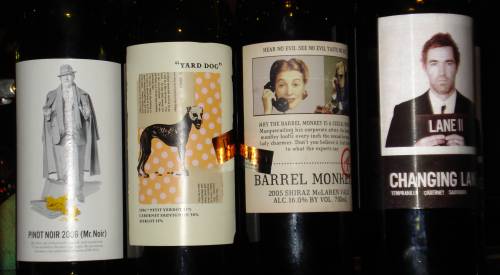
Lane - mugging for the label on the far right bottle.
Welcoming Italy with Open Arms
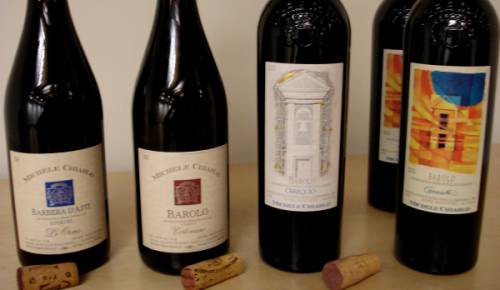
posted March 2 2008
by Daenna Van Mulligen
Your
imagination is not working overtime. And it’s not just your own personal
discovery…Italian wines are popping up all over the place and they’re certainly
becoming more important to Canadian consumers each year.
Italian wine exports to the USA are still leading the pack followed by Great
Britain, Russia and yep, Canada. We Canadians are becoming more savvy and more
intrigued by, (and willing to try) new wines from different regions made from
obscure varietals.
We are seeing a solid (and welcome) increase in wines from the more southerly
regions in Italy - Puglia and Sicily especially but I’d like to see more from
Sardinia, Calabria and Campania. The BC Liquor Stores website shows over 450
wines from Italy (this does not include spec or restricted items). Less than 75
of those are from southern Italy and Sicily, under 50 of those are from central
east (Abruzzo, Molise and Emilia-Romagna area), just over 150 are from central
west (Tuscany primarily), 100 or so are from the northeast (Friuli, Veneto,
Trentino-Alto Adige) and just over 60 hail from the stunning northwest (Piedmont
and Lombardy). We’re all eagerly watching (and salivating) to see what happens
after last weeks – Italian themed - 30th Vancouver Playhouse
International Wine Festival (VPIWF).
Not just new, but established Italian exporters are hitting our Canadian palates
and well-known Piedmont producer Michele Chiarlo is one of them. Chiarlo readily
admits to an increase in sales in countries like China, Russia and India
(because of the growing middle classes in these regions it will be a continuing
trend) but he’s happy to announce that Canada now ranks number two in his
international wine sales. Recently, Chiarlo was in Vancouver to host a small sit
down tasting featuring some of his wines. It seems to be a prerequisite to be
charming if you’re an Italian winemaker and Michele Chiarlo is no exception.
I’ll admit a weakness for the classic Aussie wine uniform - jeans and un-tucked
shirts (it’s so Aussie after all) but the Italians always arrive in style,
suited up – silk ties are not an option. And arrive in style he did, with a
lovely selection of current and (soon to arrive) vintages in tow.
Michele Chiarlo Piedmonte Italy
prices are approximates
Gavi
di Gavi, DOCG, 2006
– I love this white! Made from 100% Cortese it has gorgeous, fresh aromas –
peaches, sweet citrus, apple peel, a hint of rose petal and a pinch of almond
oil. Its wonderfully refreshing, softly rounded on the palate with white fruit
flavours and a clean, lingering finish.
$26.75 (+72359) 375ml BC/AB
private wines stores
91 Points
Barbera D'Asti "Le Orme" 2005
– A brilliant ruby-cherry hue perfumed with crushed dark floral aromas,
concentrated cherry and mineral notes. Soft on the palate with bright berry
fruit, tobacco and peppery spice. Its lovely acidity pairs well with Italian
dishes.
$23.78 (+872788) 375ml BC/AB private wine stores
91 points
Cannubi Barolo, DOCG 2003 – An intensity of sweet aromas – cherry liqueur, delicate purple
flowers, warm spices and cedar. Elegant – this wine has softened with a few
years and still shows fresh, but delicate, fruit. The Cannubi is feminine and
bright with soft tannins on the finish. Gorgeous!
$99.20 (+606111) BC AB private wine stores
93 Points
"Nivole" Moscato D'Asti DOCG, 2006
– Lovely grapey (Muscat) notes with honey, white floral and white peach aromas
that are released with the zippy bubbles. A sweet wine - dessert wine – with
flavours reminiscent of its aromas as well as minerals, citrus rind and lime
leaf. Balanced and clean on the finish. Like the label says “nivole” (which
translates to clouds) is where you’ll be sipping this sweetie.
$16.84
375ml (+400382) BC Liquor Stores, AB
90 points
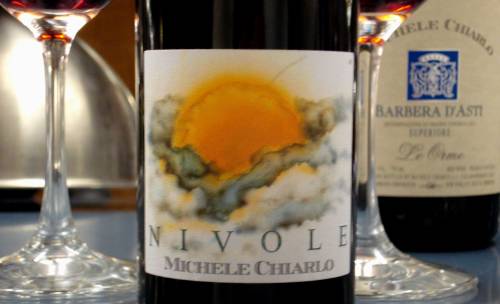
Pacific Breeze
Winery
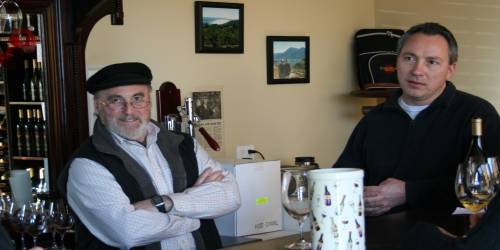
posted March 5 2008
by Daenna Van Mulligen
Few know that in a
small industrial park in New Westminster BC there is a winery. Just minutes away
from the Quay and historic downtown New Westminster sits the tasting room and
winery of Pacific Breeze.
So, in a province where we can’t get enough of our own wine, we drink it
incessantly and we travel to wine country given any opportunity - is so little
known about this gem? Because Pacific Breeze has fallen into the crack of our
border - the grapes are from California, the wine is made in British Columbia.
Which means the wines from Pacific Breeze cannot be sold as BC wines – they
cannot be fall under the VQA (Vintners Quality Alliance) label and they cannot
be promoted at BC wine events. They can’t claim the status of California wines
nor be poured at California wine tastings either.
It’s a bit of a pickle really – politically speaking.
It’s a shame because these guys are serious, passionate and determined to make
great wine. And, they are. Owners Frank Gregus and Maurice Hamilton primarily (although not
entirely) source the grapes, from Lake County, north of San Francisco in
California. This inland appellation is part of the North Coast AVA (American
Viticultural Area) and sits just east of Mendocino County, northeast of Sonoma
County and shares its southern border with the famed Napa Valley. Most wineries
in the lesser known Lake County dot the landscape around the rich soil
surrounding Clear Lake and their vineyards reap the benefits of the region’s
rocky red volcanic earth. That's certainly part of the reason for their
judicious decision to source, purchase and build relationships with the grape
growers of this region.
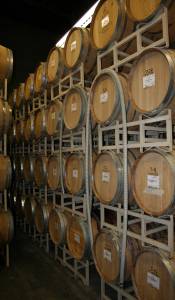 What happens next?
What happens next?
Right after harvest in California the grapes are loaded into refrigerated
long-haul trucks and driven non-stop to New Westminster. Here, winemakers Dan
and Don take over and the winemaking
process begins: crushing, fermenting, blending, barrel ageing…
There's been no lack of investment in this little winery. They've invested in
210 barrels (mostly French), seven tanks and in 2006 they produced nearly 3000
cases of wine made from classic Bordeaux varietals, classic Rhone varietals and
Chardonnay. When I visited Pacific Breeze in early February we tasted the
current wines from the 2005 vintage and some stunning samples including a soon
to be released tank sample of GSM (Grenache Shiraz Mourvedre) and a barrel
sample of youthful Zinfandel with good bones and tooth-blackening extraction.
These men are obsessive “red” guys, it oozes out of them. Chardonnay is a bit of
an afterthought – the “closest white they can get to a red”, as Maurice says. I
found their 2005 Chardonnay a tad heavy on the oak but the barrel sample of
their 2006 showed great promise for fruit/oak balance.
If you make it,
will they buy it?
Not necessarily, flogging wine is not an easy job. And, flogging wine that
confuses people with its provenance is harder yet - even as well made and tasty
as the Pacific Breeze wines are. But headway is being made. I have seen the
wines on the shelves at local private wine stores and the list of restaurants
where the wines are sold is growing. Once people taste them – they are sold.
And, the boys at PB are making a substantial effort at promotion with a regular
newsletter and ongoing events on site at the winery.
To learn more about these
events visit them at
www.pacificbreezewinery.com. On the website you'll also find a listing of
stores and restaurants that have their wines. And, if you have a few hours on a
Saturday, visit their garage winery and tasting room which is open from noon-4pm
each Saturday for tasting and purchasing wine.
The wines:
Pacific Breeze
Chardonnay “Sangiacomo Vineyards”, Carneros Ca.,2005
– Golden-hued with rich toasty aromas, ripe pear, roasted pineapple, caramel and
oak spice. On the palate it’s rounded and smooth with creamy fruit, spiced rum
and caramel flavours.
$29.95
90 points

Pacific Breeze Cabernet Sauvignon “Hawk & Horse Vineyards”, Red Hills of Lake
County, Ca., 2005 – Cassis and briary fruit on the nose with undertones of
cedar, vanilla and mint. On the palate it’s full-bodied and smooth with
luxuriant, dark berry/cherry fruit, vanilla spices and chocolate with fine,
dusty tannins on the finish.
$39.95
91 points

Pacific Breeze Cabernet
Sauvignon “aCURE eSTATE Vineyards”, Alexander Valley Ca., 2005-
Made with 81% Cabernet
Sauvignon, 17.5% Merlot,5% Cabernet franc and 1% Petit Verdot it has upfront
cassis, cherry and cedar aromas with undertones of vanilla, chocolate and a hint
of marzipan. Lush and full-bodied on the palate showing elegant layered flavours
of smooth berries with spiced cocoa and oak on the finish.
$39.95
91 Points

Pacific Breeze Cabernet Sauvignon “Signature Series”, Red Hills of Lake County
Ca., 2005 - This “Signature” Cabernet is made from 91% Cabernet, 8% Syrah
and a ½ percent each of Cabernet Franc and Petit Verdot. Rich aromas - fresh
dark berries, sweet chocolate, warm spices and vanilla. Smooth fruit on the
palate, earth and minerals followed by peppery spices, tobacco and cocoa with
firm tannins throughout.
This is a cellar keeper.
$49.95
92 Points
Pacific Breeze Winery and Tasting Room
# 6 – 320 Stewardson Way
New Westminster, BC
Take a Quaff on the Green Side
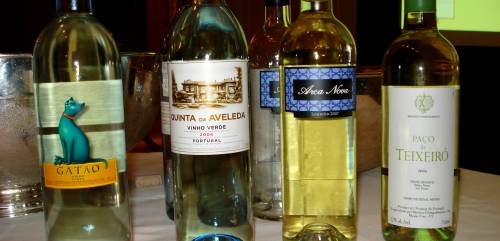
posted March 10 2008
by Daenna Van Mulligen
There are certain words synonymous with freshness when one refers
to wine.
The three blancs - Pinot, Chenin and Sauvignon, and of
course…Vinho Verde.
Beyond a general
understanding that Vinho Verde translates to green wine few understand
what and where Vinho Verde is. Perhaps the “green” in green wine refers
to the crisp, youthful character that perfectly describes these fresh, low
alcohol wines from the northwestern Portuguese region of the same name. And, as
much as we wine geeks recognize Vinho Verde as an appealingly easy-drinking,
exceedingly food-friendly wine, it’s not often enough that we are able to taste
them – so few are available in our market. So, when the Vinho Verde Commission
blew into Vancouver last week with a fine selection of VV in tow – the local
wine-y contingent happily showed up (and lapped it up) - despite the previous
week’s exhausting non-stop sipping during Playhouse Wine Festival.
The best part of these intensive tastings is focusing on the region
itself. The terroir, the history and classic regional food pairings - soft
cheeses, salads and seafood are obvious choices.
About the Region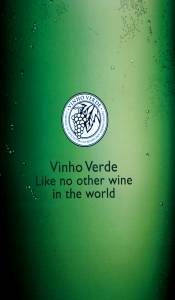
Vinho Verde is a controlled appellation of origin -a
quality wine only produced within specified regions.
It's approximately 34,000 hectares of vineyards with 30,000 wine growers broken
into nine sub-regions. It sits just below Spain against the Atlantic Ocean as
Portugal’s most northwestern region. Its fresh, white varietals run the gamut
from the very noble floral/fruity Portuguese Alvarinho (known in Spain as
Albarino) to Arinto, Avesso, Azal and Batoca to Loureiro
and Trajadura. Far less obvious to those of us living outside of the
VV region (most is consumed locally) are the native varietals that produce high
acid, low fruit and high tannic red wines made from a variety of grapes like:
Alvarelhão (aka Brancelho), Amaral (aka Azal Tinto), Borraçal, Espadeiro,
Padeiro,Pedral, Rabo de Anho and Vinhão.
Not easy words to pronounce, and, made from varietals rarely seen in our market.
That
makes for a hard sell to consumers who have not yet been educated about them. But the good news is that
these crisp whites and fragrant rosés are well-priced enough to tempt more wine
drinkers over to the green side.
Vinhos Borges “Gatão” Vinho Verde Portugal, 2007 –
We think. When I say we think I mean that Gatão doesn’t have a vintage on the
label. The wine-y contingent got a kick out of that. Fernando Seixas who visited
was quite indignant at our queries after pouring his wine that “…Each vintage
is the freshest. Why would we need to put a vintage on it – its always fresh?”
And fresh it was – pale straw coloured with delicate white fruit, herbal aromas,
mineral and citrus. Light-bodied and mouth-watering, crisp and clean made from a
blend of the white varietals: Azal, Arinto, Trajadura and Avesso.
Not currently available in BC but rumor is, it will be soon at approximately
$11.
Quinta da Aveleda, Vinho Verde Portugal, 2006 – A blend of the
richer white varietals of Loureiro, Trajadura and Alvarinho it has
pretty aromas of ripe orchard fruits – apple, pear and white peaches with fresh
citrus notes. Super crisp and zesty on the palate, lip smacking acidity, creamy
white fruits and a softly rounded finish.
Currently on special order through Maxxium Canada approx. $13.50
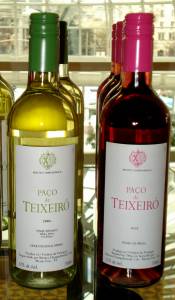 Montez
Champalimaud “Paço de Teixeiró” Vinho Braco, Vinho Verde Portugal, 2006 – A
blend of Avesso, Loureiro, Trajadura and Arinto the 2007 was just bottled so
unfortunately we were unable to taste it. Richer than the others we tried (due
to partial malolactic fermentation) it showed honey, flowers, tropical notes and
crisp citrus. Softly rounded on the palate with floral flavours creamy peaches
and pears, herbal notes and lemon oil.
Montez
Champalimaud “Paço de Teixeiró” Vinho Braco, Vinho Verde Portugal, 2006 – A
blend of Avesso, Loureiro, Trajadura and Arinto the 2007 was just bottled so
unfortunately we were unable to taste it. Richer than the others we tried (due
to partial malolactic fermentation) it showed honey, flowers, tropical notes and
crisp citrus. Softly rounded on the palate with floral flavours creamy peaches
and pears, herbal notes and lemon oil.
Imported by Global Wine Merchants of Edmonton Alberta – Approx. prices AB
$14.99/Ontario & Quebec $12.99
Montez Champalimaud “Paço de Teixeiró Rosé”, Vinho Verde Portugal, 2006 –
Is the alluring colour of watermelon with fresh berry aromas and tart fruit
flavours with earth, spice and a smooth berry finish.
Imported by Global Wine Merchants of Edmonton Alberta
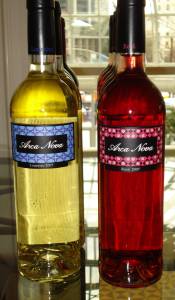
Quinta Das Arcas “Arca Nova”, Vinho Verde
Portugal, 2006 – Made from 100% Loureiro the Arca white is more herbal than
the others showing lemon oil and ripe tree fruit aromas. On the palate there is
a hint of sweetness and similar flavour/aroma profile finishing with
mouth-watering crispness.
Not currently available in Canada
Quinta Das Arcas “Arca Nova Rosado”, Vinho Verde Portugal, 2006 - Is a
brilliant shade of strawberry with pretty raspberry, crabapple and citrus
flavours. Would be great as a sipper or with spiced Asian dishes.
Not currently available in Canada
A
Chilean Icon
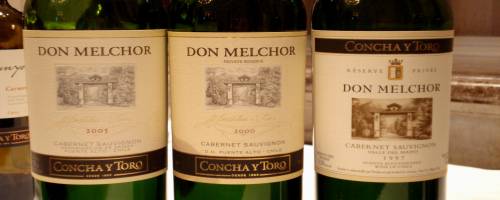
posted March 11 2008
by Daenna Van Mulligen
There’s been a lot of buzz
about Chile lately - almost like that long sliver of land suddenly reappeared on
the map. We get the impression that perhaps it’s been reinventing itself while
we were face first in our bowls Aussie Shiraz. Or maybe it’s that interesting
bottles of wine from Chile’s smaller producers are finally finding their way
across our borders and the premium offerings from large established Chilean
houses are the new media darlings.
Either way, its good news for us all.
We wine drinkers have long been intimate with the affordable wines of Chile.
And few of those are more recognizable than Concha Y Toro. Of course, Viña
Concha Y Toro has been around long enough to become the largest exporter in
South America and one of the most powerful brands in the world today – all
because of an entrepreneur named Don Melchor. When Don Melchor imported Bordeaux
varietal vines into Chile in 1883 he not only established a winery, but a brand
that people would associate with Chile long into the future. I had reviewed (and
rated highly) some Conch Y Toro wines recently; the delicious Marques Casa
Concha’s (which I spoke about during my weekly segment on Terry David Mulligan’s
radio show The Tasting Room) but I had never had the opportunity to sit down and
taste back vintages of the ultra premium Conch Y Toro wine – Don Melchor.
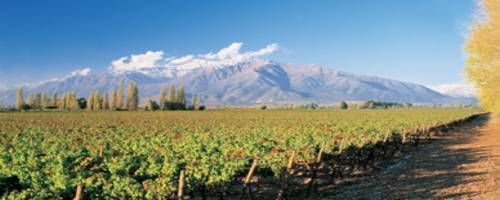
Don Melchor Cabernet Sauvignon’s are stunning examples of the highest echelon of
Chilean wines which fall under “icon” status similar to Viña Valdivieso’s
Caballo Loco, Viña Errazuriz’s Viñedo Chadwick and Viña Montes Alpha M. The Don
Melchor is made from Cabernet Sauvignon, sometimes with a small addition of
Cabernet Franc depending on the vintage, and all the grapes come from one
vineyard – the Puente Alto. The Puente Alto Vineyard - very near to Santiago -
is a 114 hectare site that is divided into seven parcels - six lots of Cabernet
Sauvignon and one of Cabernet Franc. It sits inland, in the Maipo Valley at the
base of the Andes Mountains, 650m above sea level and it is planted with
relatively young vines (in the grand scheme) of 20-25 years old. Although all
part of one vineyard site, each of these lots contributes something different to
the resulting wine. Some lots produce depth of flavour and ripe fruit while
others provide excellent tannic and acid structure or another; elegance and
finesse. Technical information like this has our heads reeling but it makes for
a passionate winemaker and ultimately down the road – after studious blending
and French barrel aging - a great bottle of wine.
Concha Y Toro Don Melchor’s chief winemaker Enrique Tirado was in town this past
week to speak about the Puente Alto Vineyard and to taste three of his Don
Melchor wines – 1997, 2000 and the soon to arrive 2005.
Don Melchor, Puente Alto Vineyard, Maipo Valley Chile, 1997 – The 1997 is
made from entirely from Cabernet Sauvignon and is starting to show a touch of
age in its ruby colour. Fresh and juicy with upfront prune plum and blueberry
aromas, menthol, chocolate and briary undertones. On the palate is smooth with
creamy berry fruit, dark cocoa, earth and tobacco with soft tannins.
94 points
A small amount of 1.5L magnums will be soon available at select fine wine
stores and restaurants. Approx. $200
Don Melchor, Puente Alto
Vineyard, Maipo Valley Chile, 2000 – Also entirely Cabernet Sauvignon the
2000 vintage is dark ruby in colour with deeper, earthy aromas, smoked plums,
red berries, meaty notes and toasted oak undertones. Minerals on the palate -
fleur de sel, cedar and fresh berry flavours with oak hints on the finish. Shows
elegance and power with tight-youthful tannins.
93 points
A small amount of 1.5L magnums will soon be available at select fine wine
stores and restaurants. Approx. $210
Don Melchor, Puente Alto Vineyard, Maipo Valley Chile, 2005 – Ruby in colour
with some purplish glints the 2005 is 97% Cabernet Sauvignon with 3% Cabernet
Franc. Its dense aromas show plums, cassis, smoked meats and dark earth. It’s
silky and youthful on the palate with smoky, spiced cherry and fleur de sel/mineral
flavours like those in the 2000. It shows fresh acidity throughout and supple
tannins on the finish.
93 points
The 2005 vintage will be arriving soon at select private wine stores and
restaurants. Approx. $66 (750ml)
More Concha Y Toro Reviews:

Concha Y Toro
Marques de Casa Concha Chardonnay, Maipo Chile, 2005
Crisp pear, toast, nut praline and tropical fruit notes. On the plate
this lovely Southern Hemisphere Chard has clean flavours, a buttery texture with
ginger-pear compote flavours...
read full review here...

Concha Y Toro
Sendero Cabernet Sauvignon, Central Valley Chile, 2006 - Bright berry
fruit, chocolate and rich earthy aromas with undertones of leather and savoury
herbs. Rich dark earth and fruit on the palate - berries and cherry - smooth and
fresh with...
Read full review here...

Concha Y Toro "Winemaker's Lot 152" Carmenere,
Rapel Valley Chile, 2005 -The Carmenere is deeply ruby-garnet hued
and displays seductive raspberry, blueberry and warm vanilla notes. On the
palate it's rich and chocolaty with lush berries and tobacco...
Read full review here...
Lungarotti
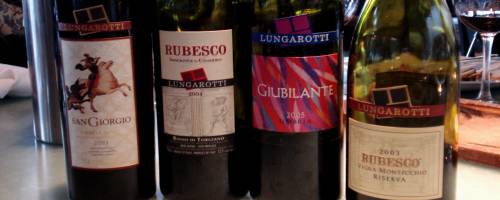
posted March 12 2008
by Daenna Van Mulligen
Where Wine Meets Art
A few weeks ago someone
mentioned the name of an Italian wine producer that I instantly recognized, but
I couldn’t remember why. It suggested to me that the name was established enough
that I’d become familiar with it in the past and yet I hadn’t seen a bottle of
their wine for quite a while. The logo and label escaped me.
So, when I was introduced to Chiara Lungarotti and her delegation last week I
was happy to see that recognizable bottle of wine called Rubesco on the table. I
honestly couldn’t remember the last time I had tasted Rubesco – but it had to
have been a number of years. Possibly the same number of years it had been since
this new mother had last visited Vancouver in 2000.
The family
Cantina Lungarotti is a family winery, run by a powerful female duo – Chiara and
her sister Teresa Severini with support from their art historian mother, Maria
Grazia.
Cantina Lungarotti was founded in the 1960’s by agronomist and viticulturalist
Giorgio Lungarotti, who fortunately passed on his passion for wine and vinous
education to his two daughters. And although they had always been involved in
the winery, the daughters took complete control after Giorgio’s passing in 1999.

The winery and vineyards
Located smack in the middle of Italy, in Torgiano, in Umbria – just one and one
half hours from Rome – you’ll find Lungarotti. Their vineyards total around 700
acres in Torgiano and 50 acres in nearby Montefalco. And although Chiara does
not consider the Lungarotti vineyards organic she and her family have become the
first Italian winery to test the production of thermal energy, produced when
vine cuttings are rolled into “robo-bales” which are in turn transformed into
chips, then burned. This creates enough thermal energy to cover 70% of the
winery’s energy needs. In these days of conscientious living and carbon
foot-printing 70% is a substantial offering to Mother Nature.
And while “going green” is crucial to the sustainability of the planet,
recognizing art and history is also very important to them. Which is not only
why each label features a classic or modern work of art, but why the Lungarotti
Foundation developed and built their Museum of Wine (Museo dell Vino 1974) and
then the Museum of Olive and Oil (Museo dell‘Olivo e dell’Olio 1990) as a
tribute to tradition. It also puts a visit to Lungarotti at the top of my list -
the next time I am in Roma.
The wines
Despite the Pinot Grigio, the Trebbiano, the Grechetto and the Cabernet that is
grown in their vineyards it’s the blend of Sangiovese and Canaiolo that makes
the up the flagship Lungarotti wine known as Rubesco. Rubesco (from the Latin
word rubescuere – blush) is a fresh and fruity red wine that is aged in
extra large casks to allow the fruit to shine through and ensure it remains a perfect
food partner.
Most of
these wines are available in Ontario but I hope to see more of them coming into
the BC market soon.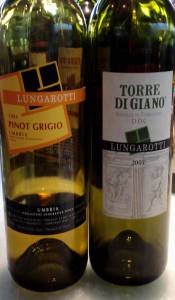
Lungarotti Pinot
Grigio, Umbria, 2006
– It's a ripe, fruity Pinot Grigio in contradiction to some of the insipid
versions we often taste from cooler northern Italian regions. But the Lungarotti, made in the much warmer Umbria shows sweet melon, apple and floral
aromas. It’s exceedingly easy to drink – softly rounded with crisp orchard
fruits, juicy citrus and mouthwatering acidity on the finish.
SRP $15.99, On$13.95
Lungarotti Torre di Giano Bianco di Torgiano, Umbria 2007 – A blend of
Trebbiano (70%) and Grechetto (30%) this wine is crisp and clean with citrus and
mineral aromas and flavours. It a perfect food wine made for soft cheeses,
risotto and seafood.
SRP $16.99 Alberta, On $9.95
Lungarotti Rubesco, Rosso
di Torgiano,Umbria 2004 – The flagship Lungarotti wine, a blend of 70% Sangiovese and
30% Canaiolo has aromas of juicy cherries, dark floral notes and warm spices. On
the palate it shows fresh red fruit, bright acidity and soft tannins perfect for
tomato based sauces or antipasti.
BC $15.99, On $13.50
Lungarotti Giubilante,
Umbria, 2005 – A newer wine for Lungarotti the brightly hued “joyous or
jubilant” label is made from Sangiovese, Merlot and Syrah. It has sweet, warm
cherry aromas, spice and dark purple floral notes. On the palate it is
medium-full bodied with cherries, plums cocoa and coffee flavours with balanced
acidity and supple tannins.
$ n/a
Lungarotti Rubesco
Riserva Vigna Monticchio, Torgiano Umbria, 2003 – This reserve version of the
Rubesco is made with the same 70/30 Sangiovese/Canaiolo blend but is harvested from the
single, hillside Monticchio vineyard and is aged, unfiltered for 12 months in oak. It
shows creamy fruit aromas. Cherries, plums, chocolate and dark floral notes with
a silky palate - earth and oak spices appear on the tongue and the tannins are
nicely integrated. This wine needs heartier dishes - earthy lentil dishes,
hearty pastas or roasted meats.
$38.95 On, SRP for new vintage in other provinces $49.99
Lungarotti San Giorgio, Rosso dell’Umbria, 2003 – This is what Chiara
calls their “Super Umbrian” due to its similar makeup to the famed “Super
Tuscans” from farther north. A robust blend of Sangiovese (40%), Canaiolo (10%)
and Cabernet Sauvignon (50%) featuring dense aromas of briary berries, cassis
and fresh, dark earth. On the palate it’s full-bodied, lush and ripe with
berries, licorice, creamy chocolate, violets, leather and cedar flavours.
Quite magnificent.
SRP on new vintage $54.99, On $41.95
























 What happens next?
What happens next?





 Montez
Champalimaud “Paço de Teixeiró” Vinho Braco, Vinho Verde Portugal, 2006 – A
blend of Avesso, Loureiro, Trajadura and Arinto the 2007 was just bottled so
unfortunately we were unable to taste it. Richer than the others we tried (due
to partial malolactic fermentation) it showed honey, flowers, tropical notes and
crisp citrus. Softly rounded on the palate with floral flavours creamy peaches
and pears, herbal notes and lemon oil.
Montez
Champalimaud “Paço de Teixeiró” Vinho Braco, Vinho Verde Portugal, 2006 – A
blend of Avesso, Loureiro, Trajadura and Arinto the 2007 was just bottled so
unfortunately we were unable to taste it. Richer than the others we tried (due
to partial malolactic fermentation) it showed honey, flowers, tropical notes and
crisp citrus. Softly rounded on the palate with floral flavours creamy peaches
and pears, herbal notes and lemon oil. 







